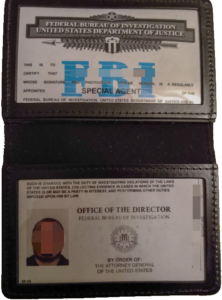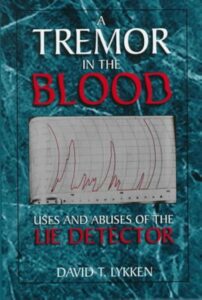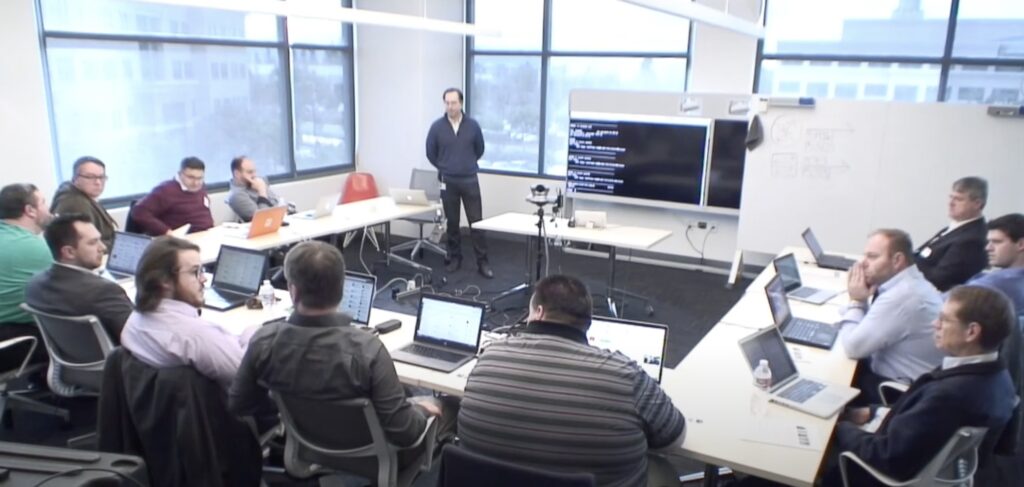Some years back I wrote a post poking fun at the Federal Bureau of Investigation, based on an experience I had at a briefing in their office. The funny thing is–and this did not color my article– there was a point in my life when I badly wanted to be an FBI agent.
Back in the early 2000’s, I was a run-of-the-mill network engineer. I liked what I was doing, but I also felt a lack of purpose and direction in life. I also didn’t want to sit around in an office all day. I think a lot of people in their twenties go through this, at least in America. It’s why my nephew is trying his hardest to become an Air Force parajumper. It’s why my brother wanted to be a Navy SEAL. (He had to settle for infantry major.) This seems to be a “first world” problem. Coworkers from other countries tell me all they want is a good job and home, and a safe place to raise their kids. American affluence leads to boredom, and boredom to a desire to do something more important.
At that time, the FBI had three tracks for joining as a special agent. You could enter if you had a law degree, or an accounting degree. If you didn’t have one of these, you could enter under the “diversified” qualification, meaning you had some other experience that might be relevant to the Bureau. At some point in the early 2000’s, the FBI added CCNP and CCIE certifications, specifically, as qualifications equivalent to a law or accounting degree!
I’d actually had some interest in an FBI job back in college. I remember a female student who was also quite interested, and at graduation we looked at each other and said “see you in Quantico“, the FBI’s training center. (I looked her up for this article, and it turns out neither of us got there.) I had parked my interest as I didn’t wind up getting a law degree, but it was rekindled when I saw they added Cisco certifications to the list.
How cool would it be to investigate and bust criminals? How cool would it be to have a badge and credentials to flash at people? How cool to have arrest powers? I was bullied as a kid, so I always had respect for law enforcement officers, and a strong belief in the importance of law and order. One night, walking home by myself, I remember some kids vandalizing cars and houses. “We’re f**ing s**t up!” they shouted at me. I didn’t have a cell phone on me, and I couldn’t do anything. But if I had a badge and a gun, I could have put a stop to it! (My guess is that actually, a lone FBI agent would call the cops and not try to singlehandedly stop a group of thugs.)
I bought several books on the FBI and the application process, and started reading up on it. The X-Files was popular at the time, but I had a realistic understanding of what the FBI did and was well aware that I would not be driving around the country chasing space aliens. My hope was to be a cybercrime investigator. I remember telling my brother and some of my friends that this was my plan.
So what happened? Well, I never even applied, for a few reasons.

Not for me!
First, I hate exercise. I was always the last kid picked for sports teams. I was always behind on our school’s annual fitness testing. PE class was a constant source of embarrassment. The FBI requires a challenging fitness test just to get in, let alone to pass their academy. I ended up signing up at a local Karate studio to try to get in shape. I never got beyond a white belt. (I’m proud to have a white belt in Karate, Tae Kwon Do, and Judo!) While I liked learning the techniques, they had an intense fitness class required as part of their program and I hated it. How could I survive six months of that?
Second, I didn’t want to live in a dorm for the academy, and I really didn’t want to live with a roommate, even for a few months. There were two videos on the FBI Academy at the time, one from Joan Lunden and another from CNN. I paused them when they showed the dorm rooms, and I clearly saw two beds. I had a horrible time with my college roommate, and I didn’t want to experience that again. Granted, an FBI trainee was not likely to show up at 3am stoned and wake me up to chat, but still, the lack of personal space, the snoring… I didn’t want it.

Actual FBI dorm room-no thanks!
Third, if I went to the FBI, I’d take a pay cut. Even a few years into the IT world, as a Cisco-certified engineer, I was doing quite well for myself. I wanted to serve a greater purpose, did I really want to get paid a lot less?
Next, FBI agents are required to go anywhere in the country the bureau assigns them. They also have to move several times in their career. All I wanted was to live in San Francisco, my home town. My friends and family were there. How could I deal with it if I were assigned to Peoria? Or, horror of horrors, New York City??
Finally, I did not want my job to be tied to the polygraph examination. I’d been fascinated by “lie detectors” since I built a rudimentary one from an electronics kit when I was a kid. I had read A Tremor in the Blood by David Lykken, Ph.D. I knew that the lie detector is anything but. Sociopathic liars often pass it, and legitimate and honest people often get called out as liars. If I did do the work to get in shape, set my sites on this accomplishment, and then failed a polygraph not because I was lying, but because it’s a stupid test, it’d be miserable. And FBI agents can be routinely tested with polygraphs. Imaging getting the job and then losing it due to a faulty polygraph!

Read this and you’ll never want to take a polygraph
A couple years ago, a former FBI special agent named Vincent Sellers released a book called “Eyes Pried Open: Rookie FBI Agent.” Sellers had a similar background, an IT guy who wanted to do something bigger. (Although he was actually a strong runner.) His book affirmed everything I had thought. Even for him, the exercise was brutal, including knuckle pushups that left permanent scarring.

Vincent Sellers
Agent Sellers left the FBI after only two years. He didn’t like the job! The hours were brutal, and while it had a few exciting moments, it was not that rewarding for him. Even if I made it through, which I wouldn’t have, I’d probably have hated it too. Sellers went back to being an IT project manager.
I’ve been blessed to have an amazing career as a network engineer. I’ve been an in-house engineer, a pre and post sales engineer at a partner, a TAC engineer, and now I work in product management. I’ve been in telco CO’s, I’ve gotten to play with all kinds of interesting gear, I’ve presented at Cisco Live. I suppose having a shiny badge to flash would be cool, but the novelty would wear off eventually. And I’ve never done a single knuckle pushup.
I remember a negative review of the movie La La Land by James Bowman. I appreciate Bowman because he basically doesn’t like any movie he sees. He described the characters in La La Land as being successful, materially satisfied, with a lot of friends, and able to drink champagne unendingly without getting drunk. Of them he says: “The only thing they don’t have–and the only thing they really want–is fame.” In other words, they have everything in life except that feeling of importance that comes from the recognition of other people. My craving for an FBI badge was, to some degree, the same impulse. Sure there were motives higher than the characters in the movie, but it was largely driven by an inflated sense of self-importance.
Virtually all tech companies (and corporations in general) have in recent years been moved to “create a sense of purpose” for their employees. In furtherance of this, they create purpose statements of varying degrees of vacuousness, and often with no relevance to the real purpose of the company at all. The flip side of this is the implication that the real purpose of the company is not meaningful–if it were, there would be no need to concoct purpose statements. I can tell you that I find meaning and satisfaction in being a network engineer, in itself, and I hope most of my colleagues do as well. Agent Sellers had his FBI badge for only two years, but I’ve had my Cisco badge for an aggregate total of 11 years, so there must be something to it.








